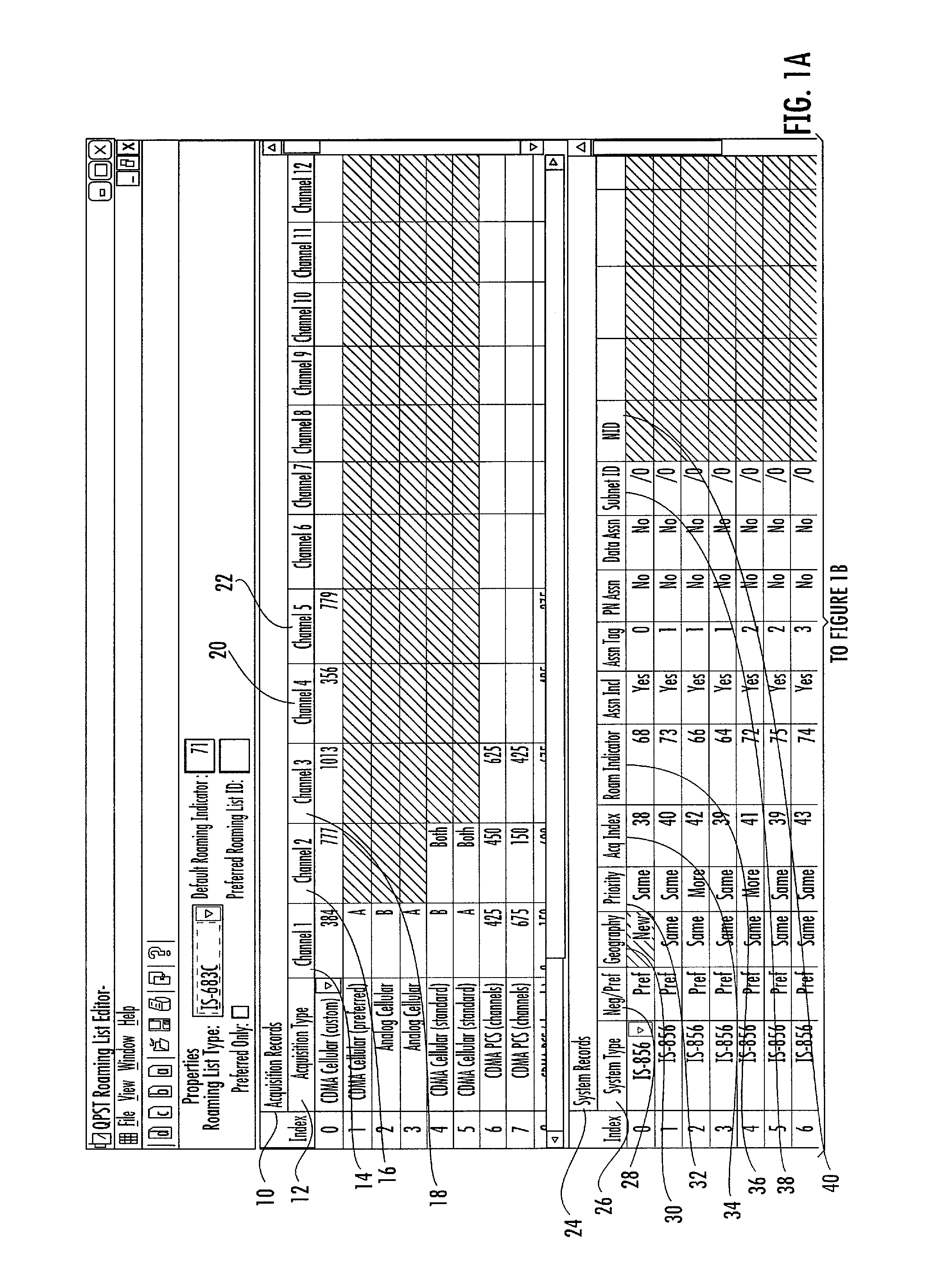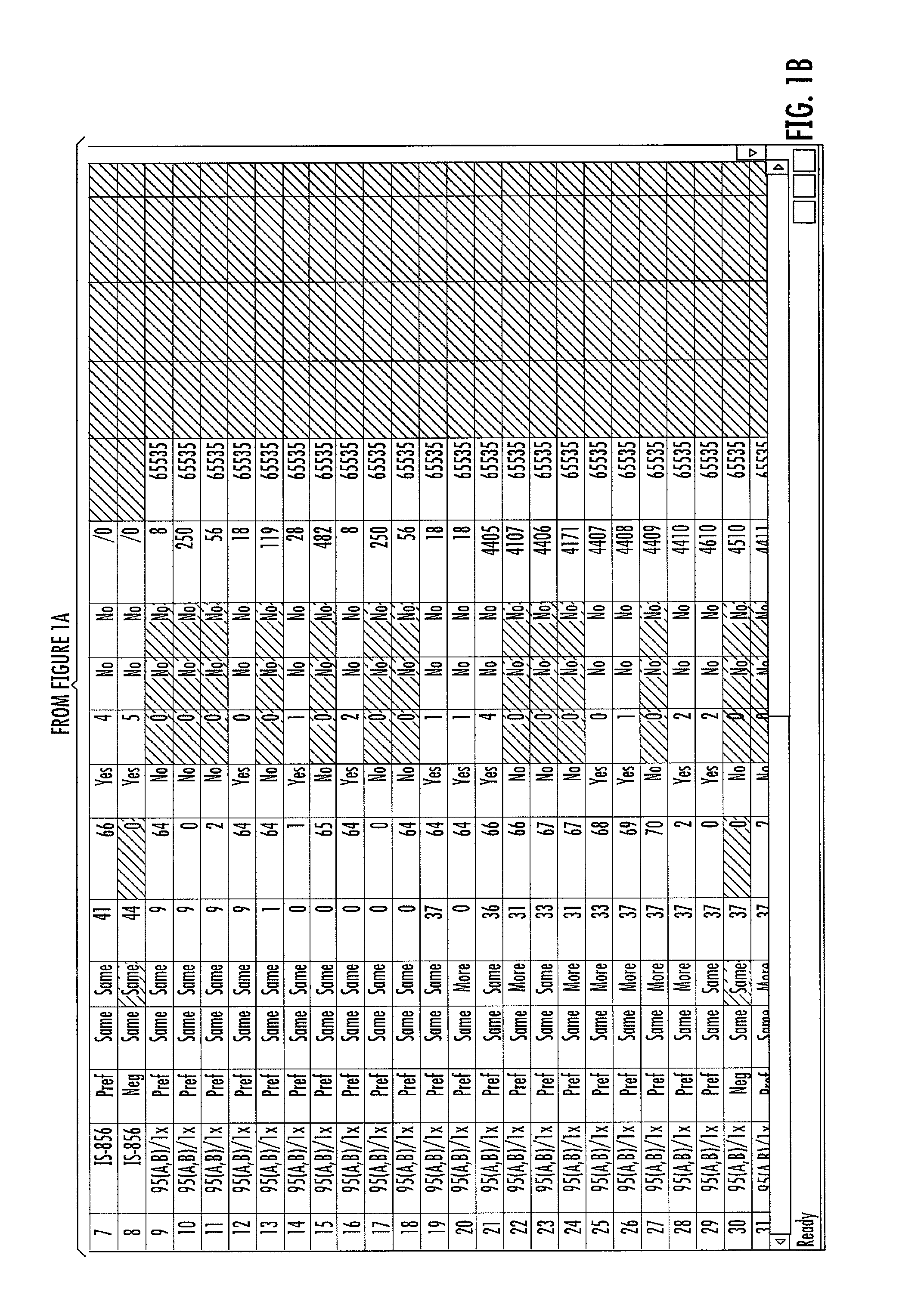Adaptive testing of system acquisition and roaming characteristics for CDMA wireless communication systems
a wireless communication system and roaming characteristic technology, applied in the field of mobile telephone systems, can solve the problems of high cost of service provision, inability to test the roaming selection, irate customers who discover, etc., and achieve the effect of improving latency
- Summary
- Abstract
- Description
- Claims
- Application Information
AI Technical Summary
Benefits of technology
Problems solved by technology
Method used
Image
Examples
example
[0047]The following illustrate how the process will work for sample PRL 12345.
1) Test PRL
[0048]
ROAMING LISTRoaming List Type:IS-683APreferred Only:FALSEDefault Roaming Indicator:71Preferred List ID:12345Acquisition TableACQINDEXTYPECH1CH2CH3CH4CH5CH6CH7-04B14A21B31A42BBothSystem TableNEG / ACQROAMINDEXPREFGEOPRIINDINDSIDNID0PrefNewSame1648655351PrefSameMore30250655352PrefSameSame3256655353PrefSameSame26418655354PrefNewSame16411965535
2) Test Case—Rescan
[0049]This test verifies the rescan functionality. Rescan tests that once a device acquires a system and a more preferred system is presented, the device will acquire the more preferred system during the rescan process. This test only evaluates systems in the same GEO.
3) Create RF / System Pairs
[0050]The test plan calls for pairs which are in the same GEO and where the second set of RF parameters is of higher priority than the first. In this PRL indices 0-3 are in the same GEO. Indices 0, and 1 are of the same priority. Index 2 and 3 are o...
PUM
 Login to View More
Login to View More Abstract
Description
Claims
Application Information
 Login to View More
Login to View More - R&D
- Intellectual Property
- Life Sciences
- Materials
- Tech Scout
- Unparalleled Data Quality
- Higher Quality Content
- 60% Fewer Hallucinations
Browse by: Latest US Patents, China's latest patents, Technical Efficacy Thesaurus, Application Domain, Technology Topic, Popular Technical Reports.
© 2025 PatSnap. All rights reserved.Legal|Privacy policy|Modern Slavery Act Transparency Statement|Sitemap|About US| Contact US: help@patsnap.com



